
by Ruth | Sep 4, 2014 | 2014, Awareness, Being Thankful, Child Care, Cooking, Cultural Differences, Domesticity, Eye on Culture, Family, Home, Inspirational, Life Balance, Life Lesson, Me-Time, Motherhood, Parenting, Ruth Wong, Singapore, Stress, Womanhood, Working Mother, World Motherhood, Younger Children
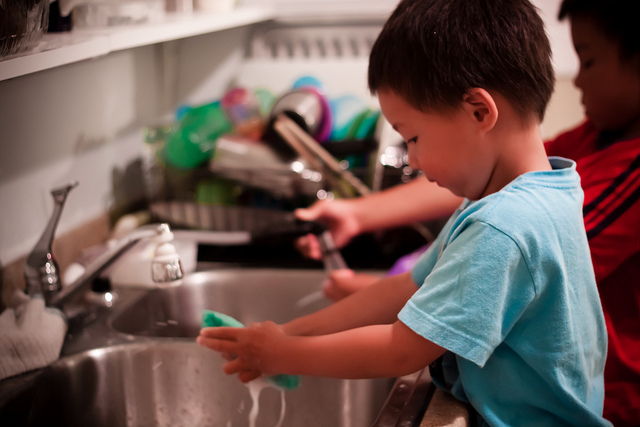 More than a month ago, our home was always clean and tidy. There were also nice home-cooked meals (complete with soup) every evening for my family.
More than a month ago, our home was always clean and tidy. There were also nice home-cooked meals (complete with soup) every evening for my family.
Fast forward to today: dust is gathering around the house while home-cooked meals have been reduced to no more than two dishes at any one time. Soup? It would be a bonus to have that once a week.
You see, our live-in helper left us…without notice…after going back to her home town, supposedly, for a two-week break.
She didn’t come back. Didn’t send notice. Didn’t even call. I later learned from friends that this is not uncommon.
At first I was angry. Not only had we wasted money on her return ticket, she also left me stranded without a back up plan.
But as the days go by, a rhythm is slowly but surely developing. I’m beginning to experience the blessings her departure brings.
- Gone are my leisurely breakfasts, escapades to the library and social media time. But I now have greater focus on what I do.
- House chores and cooking are challenges for me but I am slowly getting the hang of things.
- While there are no set days as to when chores get done, since my work takes focus in the early part of the week, I am trying to tackle the bulk of cleaning mid-week. Strangely I sometimes find cleaning rather therapeutic.
- When it comes to cooking, I am learning to exercise creativity. One dish meals are great: simple to cook but nutritious and tasty enough for most fussy taste buds.
- When the laundry is done, he helps remove the clothes from the washing machine, grabs the pegs and passes them to me “as a set” – to quote his exact words. I wonder when he might get bored and stop helping me so I am cherishing every moment.
- Might I add that my husband has also chipped in to do his part now!
I am not sure if I will cave in and get another helper again. At the moment, I am busy but happy. I appreciate the quietness (when my son is at school) and extra space I now have, and I meant that quite literally. The best part is I get my spare room back! That is something I have been wishing for and for which I can’t be more thankful.
I know that for many moms living in other parts of the world, having live-in help is rare. Some may have cleaners come a few times a month but many families manage the bulk of cleaning and household chores alone. Here in Asia, having live-in help is common.
All of this made me really admire fellow moms who have to take care of the whole household and a few kids, not to mention those who are working from home. You are amazing. How do you do it?
Really, I mean it. How do you handle your house chores? Please share some tips! Hopefully some day, I might become an amazing mom like you, who seem to be able to do it all.
This is an original post for World Moms Blog from our blogger and live-in-help-less mother of one, Ruth Wong in Singapore.
The image used in this post is credited to clogozm. It holds a Flickr Creative Commons attribution license.

Ruth lives in Singapore, a tiny island 137 kilometres north of the equator. After graduating from university, she worked as a medical social worker for a few years before making a switch to HR and worked in various industries such as retail, banking and manufacturing. In spite of the invaluable skills and experiences she had gained during those years, she never felt truly happy or satisfied. It was only when she embarked on a journey to rediscover her strengths and passion that this part of her life was transformed. Today, Ruth is living her dreams as a writer. Ironically, she loves what she does so much that at one point, she even thought that becoming a mom would hinder her career. Thanks to her husband’s gentle persuasions, she now realises what joy she would have missed out had she not changed her mind. She is now a happy WAHM. Ruth launched MomME Circle, a resource site to support and inspire moms to create a life and business they love. She has a personal blog Mommy Café where she writes about her son's growing up and shares her interests such as food and photography.
More Posts
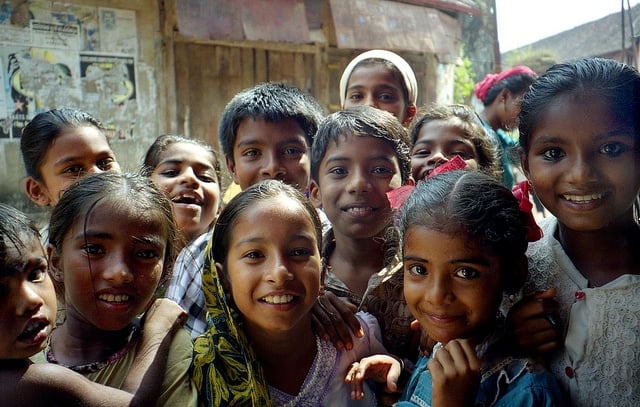
by World Moms Blog | Aug 28, 2014 | 2014, Awareness, Being Thankful, Childhood, Cultural Differences, Culture, Domesticity, Education, Eye on Culture, Family, Grandparent, Guest Post, Home, India, International, Kids, Life Lesson, Motherhood, Nutrition, Parenting, Relationships, Traditions, World Motherhood, Younger Children
 Motherhood is one of the most beautiful experiences of a woman’s life. Raising children makes life full. I am raising my children in India and I feel that the environment in India helps a lot in inculcating a strong set of values.
Motherhood is one of the most beautiful experiences of a woman’s life. Raising children makes life full. I am raising my children in India and I feel that the environment in India helps a lot in inculcating a strong set of values.
I read a lot about the many ways children are raised in various parts of the vast Indian subcontinent. Here are some of the enriching reasons I find raising a child in India so wonderful:
1. Family Help: India is a country where the joint family system is prevalent. Children grow up having a lot of fun surrounded by generations of Grandparents, Uncles, Aunts and Cousins. This helps the child in her personal growth and instills great concepts like teamwork and adjusting to different kinds of people, with different mindsets. It also helps a child understand how to receive and give unconditional love.
Sadly, the joint family is breaking up nowadays and giving way to nuclear families. The nuclear family comprises of just the husband, wife and children. Sometimes, the husband’s parents come to stay. This helps build a strong bond between the children and the grand parents, which should be encouraged. The child will learn to respect traditional values which are an integral part of the Indian social fabric.
2. Learning to Respect Your Elders: Indian children are taught to respect their elders and extended family at a young age. Being around so many family members, children learn to show respect and love to one and all when they grow up. Some communities in India make it compulsory for the young people to touch the feet of the elders as the mark of reverence.
This custom is rarely found in any other culture across the world. This custom is instilled in the child’s mind from a very young age and it becomes second nature. This custom hasn’t changed even after western ideas and practices stealthily crept into India.
3. Kids Are Taught How to Save: Children in India are taught to save and not spend unnecessarily. Due to the conservative economy, Indian children learn at a very young age to prioritise their expenses. They learn to buy things which will give them value for money.
Nowadays many banks offer the option to open minor accounts for very small children. Instead of having children save their pocket money in piggy banks, they can save it in real banks. This teaches the child banking procedures at a very early age. Children can even maintain a separate copy for calculating the total expenditure. This will teach the child that it is not good to waste money.
4. Family Values: Children are inculcated with strong family values as they grow up among numerous family members. These family values help develop strong moral fiber. In the long run, they help in creating a strong personality which helps in their growth.
5. Character Development: Character defines how the child leads a holistic life. Parents in India work hard on character building for their child. Since all parents’ desire that their child grows up to become an honest and good human being.
6. Spiritual Discipline: Indian children are raised with enormous spiritual discipline. India is the land for spiritual growth and developing the spiritual qualities in a child helps him/her grow up to be a better individual. Children are taught about the importance of religion and customs. They are also taught to respect other religions as well, since the common idea of all religion is to achieve peace, moral strength and happiness.
7. Freedom When They Play: There is no requirement for an organized play time. A child will always find a group of children playing outside his house. So they can always find fun. They can step out any moment and experience a joyous playtime. Open spaces or children’s parks are still there and are not encroached by developmental activities and high rises.
8. Sharing and Caring: There is a lot of sibling bonding in Indian families. Parents teach children tolerance towards each other, love and patience. By sharing and caring for each other, this turns them into well-adjusted human beings.
9. Celebrating Traditions: India has one of the richest cultures which dates back more than 5000 years. So India is a land of festival and colors, cliché as it may sound, it is true. These celebrations are elaborate. All the kids are involved in the celebration of the festivals with the other children in the community. The children celebrate the festivals with their families and extended families.
10. Healthy Eating Habits: Emphasis is laid on eating healthy food. Children are allowed to eat junk food once in a while, but mothers cook at home. They are happy to feed the children with home cooked food. This makes the child health conscious. Mothers teach their children to choose healthy fresh fruits and vegetables. This also increases their knowledge about what is good for them.
The above stated facts hold true for a small portion of the Indian population, as the phrase goes ‘the privileged few’. Economically, India has progressed considerably in the last 60 years. The bigger picture, however, is quite different: a farmer hangs himself from a tree because he cannot provide for his family; a child is shunned from temples and public places due to his lower caste label; the rampant poverty in villages and lack of health amenities lead to reduced life expectancy; more children are seen carrying bricks and working in factories than in classrooms. These are children who don’t have access to formal education at all.
But for increasingly more kids, growing up in India is a blissful experience which helps them develop into amazing individuals. The calmness of spirit and the enriching environment in India is what gives these children an opportunity to explore life and themselves. The liveliness of the child is based on the amazing cultural forum that the Indian child inherits.
In contrast, malnourished children peddle the streets and somehow make a living. They are deprived of things that my child claims as basic rights. We have small children selling chai when they should be drinking a warm glass of milk instead. Yet from children like these, a leader has emerged – Narendra Modi. The contradictions and ironies of my country keep me enthralled. I trudge forward in earnest hope that my child will triumph in all spheres of her life.
Also, the technological development and fast paced life have made us so busy that we are finding less and less time for each other but still Indians never forget to smile at one another. Children brought up in India will never lose heart, since they have learned to struggle and attain victory in all fields of life. But to make that happen, we need to remember the wisdom Dr. Seuss imparted:
“Unless someone like you cares a whole awful lot, nothing is going to get better. It’s not.” — The Lorax
The image used in this post is credited to Ryan Ready. It holds a Flickr Creative Commons attribution license.
This is a first-time, guest post from Aradhana, a mother in India. Aradhana also is a passionate writer, who focuses on topics like yoga, wellness, health and lifestyle. She has contributed posts to Natural News, Wiki How, MomJunction, and Elephant Journal. Through her writings, she hopes to motivate people to develop healthy habits and adopt natural ways of living to achieve sound health.
World Moms Blog is an award winning website which writes from over 30 countries on the topics of motherhood, culture, human rights and social good. Over 70 international contributors share their stories from around the globe, bonded by the common thread of motherhood and wanting a better world for their children.
World Moms Blog was listed by Forbes Woman as one of the "Best 100 Websites for Women 2012 & 2013" and also called a "must read" by the NY Times Motherlode in 2013. Our Senior Editor in India, Purnima Ramakrishnan, was awarded the BlogHer International Activist Award in 2013.
More Posts

by Dee Harlow (Laos) | Aug 14, 2014 | 2014, Awareness, Being Thankful, Cultural Differences, Culture, Family, Inspirational, Kids, Lesotho, Life Balance, Living Abroad, Marketing, Motherhood, Siblings, Travel, Twins, Womanhood, World Motherhood, Younger Children
 My family and I have just returned home to the United States after living in Laos for the past two years. We’ve been back in the States for 1.5 weeks and the highlight of my day today was a successful trip to a clearance sale at the local used children’s clothing store here in Denver, Colorado.
My family and I have just returned home to the United States after living in Laos for the past two years. We’ve been back in the States for 1.5 weeks and the highlight of my day today was a successful trip to a clearance sale at the local used children’s clothing store here in Denver, Colorado.
For $200 U.S. dollars, I bought 50 pieces of clothing for my 4.5-year old boy and girl twins to last them (hopefully) for the next three years, when we will be living in Lesotho.
No, you’re not reading typos (WMB editors are awesome). Yes, that’s $200 for 50 pieces of clothes including: jeans, pants, shorts, collared shirts, t-shirts, cute shirts, dresses, skirts, leggings, pajamas, and swimwear, sizes 5 – 8. All are like new, and many top quality brands, which some of you might recognize: Gymboree, Hanna Andersson, Mini-Boden, Garnet Hill, Gap, Carter’s.
I’ve been shopping for used children’s clothing ever since my kids were born. Heck, they’ve been living mostly in hand-me-downs from relatives and friends and this store’s used clothing.
They’ve been happy. I’ve been happy. And we’ve all received compliments on their cute clothes. I really wouldn’t do it any other way.
Sure, I see loads of advertisements, storefronts and catalogs filled with great stuff I’d love to buy, and can afford to buy. But my practical sensibilities and appreciation of value for money mostly always stops me…
”They grow so fast.”
“It’ll just get dirty or torn up.”
“Hey, those are adult clothing prices!”
As they say, “Waste Not Want Not.” Or, “One Man’s Trash Is Another Man’s Treasure.”
When I was living and working in Singapore as an investment banker, single, no kids, I was a spendthrift. Not a care in the world, except to ensure I saved for my pension.
I used to give my housekeeper handbags and shoes from the back of my closet that had gotten moldy in the extreme humidity, and she would always be delighted to receive these items that I thought were in state of trash-worthy grossness.
Weeks later, I would compliment her on her great purse or shoes and she would say, “These are the ones you gave me Ma’am.” Seriously. I felt like a fool. All I had to do was wipe them clean and put on a coat of leather polish. Silly, young, spendthrifty me.
Now I make sure our belongings are well cared for so they can last, or so they can be passed on and re-used. In Laos, used items purchased or made in America were highly coveted and sold fast. Everyone from our housekeeper, gardener, guard, colleagues at work and folks on a “buy & sell” Facebook site, gobbled up everything that wasn’t typically available locally or across the border in Thailand. Mostly because it was either cheaper, or better quality.
Consumer products sold throughout Asia tend to be of very low and questionable quality, and often not available at all in Laos.
Coming back to the land of plenty and choices, I still try to maintain the same mindset. Things can be valued for much more fundamental reasons than merely being new, or beyond the marketing image of “need” or status or image.
Sure, we can bring in the extreme perspective of the garbage dump cities all of the world where people and children actually live off of, and even earn a living from garbage. And our gut reaction is to think about how we can help them and change their situation, and feeling with a passion that something must be done about them, when in fact, it starts with us.
If we can change our habits and our mindsets, if we can demand less, if our values can put a limit on the things we accumulate versus things we re-use, then…
Who knows? Who knows what the solution is to uber-consumerism? Everyone all over the world seems to want it. Our demand for it makes it thrive. It’s not completely wrong, yet somehow it doesn’t seem right.
What does seem right to me is $200 for 50, and I’ll stick with it for as long as I can.
This is an original post to World Moms Blog by our mother of twins writer, Dee Harlow, currently in transit to live in Lesotho. You can also find her on her blog Wanderlustress.
Photo credit attributed to Mark Frauenfelder. This photo has a Flickr Creative Commons Attribution-Non-Commercial-ShareAlike license.
One of Dee’s earliest memories was flying on a trans-Pacific flight from her birthplace in Bangkok, Thailand, to the United States when she was six years old. Ever since then, it has always felt natural for her to criss-cross the globe. So after growing up in the northeast of the US, her life, her work and her curiosity have taken her to over 32 countries. And it was in the 30th country while serving in the Peace Corps in Uzbekistan that she met her husband. Together they embarked on a career in international humanitarian aid working in refugee camps in Darfur, Sudan, and the tsunami torn coast of Aceh, Indonesia.
Dee is now a full-time mother of three-year old twins and continues to criss-cross the globe every two years with her husband who is in the US Foreign Service. They currently live in Vientiane, Laos, and are loving it! You can read about their adventures at Wanderlustress.
More Posts

by Salma (Canada) | Aug 1, 2014 | 2014, Bilingual, Canada, Childhood, Communication, Cultural Differences, Culture, Education, Family, Homeschooling, Language, Life Lesson, Multicultural, Relationships, Religion, Salma, Traditions, World Moms Blog, World Motherhood, Younger Children
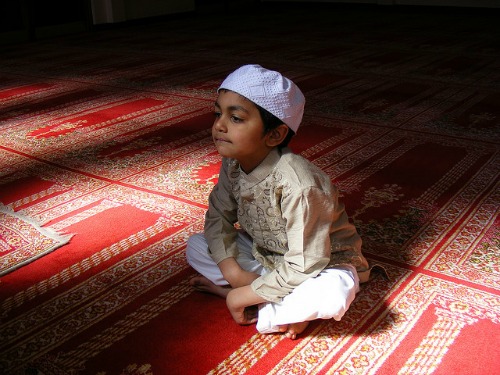 On her visit to our home last October my mother had a lot of one-on-one time with my three year old son. While I was in the hospital giving birth to my fifth child, she was asking some serious questions. In this short period of time my mother came to a serious conclusion; her grandson doesn’t know about God. (more…)
On her visit to our home last October my mother had a lot of one-on-one time with my three year old son. While I was in the hospital giving birth to my fifth child, she was asking some serious questions. In this short period of time my mother came to a serious conclusion; her grandson doesn’t know about God. (more…)

An Imperfect Stepford Wife is what Salma describes herself as because she simply cannot get it right. She loves decorating, travelling, parenting,learning, writing, reading and cooking, She also delights in all things mischievous, simply because it drives her hubby crazy.
Salma has 2 daughters and a baby boy. The death of her first son in 2009 was very difficult, however, after the birth of her Rainbow baby in 2010 (one day after her birthday) she has made a commitment to laugh more and channel the innocence of youth through her children. She has blogged about her loss, her pregnancy with Rainbow, and Islamic life.
After relocating to Alberta with her husband in 2011 she has found new challenges and rewards- like buying their first house, and finding a rewarding career.
Her roots are tied to Jamaica, while her hubby is from Yemen. Their routes, however, have led them to Egypt and Canada, which is most interesting because their lives are filled with cultural and language barriers. Even though she earned a degree in Criminology, Salma's true passion is Social Work. She truly appreciates the beauty of the human race. She writes critical essays on topics such as feminism and the law, cultural relativity and the role of women in Islam and "the veil".
Salma works full-time, however, she believes that unless the imagination of a child is nourished, it will go to waste. She follows the philosophy of un-schooling and always finds time to teach and explore with her children. From this stance, she pushes her children to be passionate about every aspect of life, and to strive to be life-long learners and teachers. You can read about her at Chasing Rainbow.
More Posts - Website

by Melanie Oda (Japan) | Jul 31, 2014 | 2014, Cultural Differences, Food, Japan, School, World Moms Blog
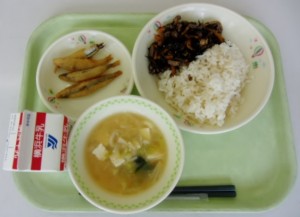
chow_time
I read on the internet a lot about how America is trying to change their school lunch program and make it healthier. And I read a lot about how some people are not happy about this. They complain that kids won’t eat what they don’t like, food gets wasted, etc.
All of that may be true. But I thought I would share what school lunch is like here in Japan.
Children in elementary schools across the country receive a hot lunch every day. The menu is widely varied, with international kid favorites like spaghetti with tomato sauce, the local preference of curry and rice with salad and yogurt, to more traditional foods like fish with miso sauce, vegetable pickles, and wakame seaweed soup. Most days the meals are heavy on vegetables. They include fruit in season occasionally, and maybe once a month or so there is a light desert like jelly (jell-o) or ice cream. Some days they have rice, other days they have bread, still other they have noodles.
And, with a few exceptions, the kids love it!
Why is that?
Part of the reason may be attitude. When my husband was a kid, they didn’t have the facilities to prepare rice and noodles, so he looks at the monthly menu and says “ii na-,” I wish I could have had that! Let’s go back another generation, to my father-in-law. He had bread and milk only every day (ironically enough, he says it was supplied by the occupying US forces,) and he was grateful for it at a time when there may or may not have been dinner waiting for him at home. But- hamburger steak and pickled cabbage with tomatoes? “Ii na!”
In our city, preschoolers, junior high kids, and high school kids have to take their lunch. A bento lunch can be a wonderful thing, but it isn’t hot and doesn’t come with milk.
But perhaps the most important reason is that the kids themselves are involved in food preparation. Each week, half the class is in charge of serving the other half. They carry the pots and trays and multiple little dishes and utensils up to their classrooms, then ladle and scoop and pass the food to each other. When time is up, they clean it up and go have recess.
So if you don’t eat, or you take too long, you make your friends late for recess. That’s quite a motivator there, isn’t it?
Japanese children, in most cases, don’t have the option of taking their lunch if what’s on the menu that day isn’t to their liking. When my son was in first grade, that really bothered me. There were days when he only ate rice, or only ate bread, and I would have been happy to have been able to pack him a sandwich or a banana or something! But after being faced with foods he wouldn’t normally try, day after day, he’s blossomed into quite the adventurous eater. He eats so many different things now. Dinner time is much less of a battle than it used to be, and I think that’s due to the varied and interesting food he gets at school every day.
Do your children have a hot lunch at school? What’s on the menu for chow time?
This is an original post by World Moms Blog contributor, Melanie Oda in Japan, of Hamakko Mommy.
Photo credit to the author.
If you ask Melanie Oda where she is from, she will answer "Georgia." (Unless you ask her in Japanese. Then she will say "America.") It sounds nice, and it's a one-word answer, which is what most people expect. The truth is more complex. She moved around several small towns in the south growing up. Such is life when your father is a Southern Baptist preacher of the hellfire and brimstone variety.
She came to Japan in 2000 as an assistant language teacher, and has never managed to leave. She currently resides in Yokohama, on the outskirts of Tokyo (but please don't tell anyone she described it that way! Citizens of Yokohama have a lot of pride). No one is more surprised to find her here, married to a Japanese man and with two bilingual children (aged four and seven), than herself. And possibly her mother.
You can read more about her misadventures in Asia on her blog, HamakkoMommy.
More Posts

by Katinka | Jul 28, 2014 | 2014, Adoption, Adoptive Parents, Being Thankful, Belgium, Birth Parents, Childhood, Contest, Cooking, Cultural Differences, Discipline, Ethiopia, Family, Food, Health, Kids, Life Balance, Motherhood, Multicultural, Nutrition, Parenting, Siblings, World Motherhood, Younger Children
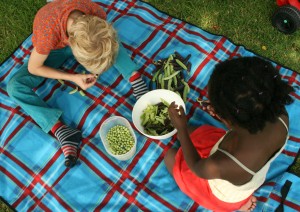 I’ve yet to meet a mom who is not monitoring her kid’s eating habits. Some might even be obsessed over it, others just make sure their kids eat enough or don’t overeat. Food can be filled with cultural, health or moral values and seems an important subject in most families I know.
I’ve yet to meet a mom who is not monitoring her kid’s eating habits. Some might even be obsessed over it, others just make sure their kids eat enough or don’t overeat. Food can be filled with cultural, health or moral values and seems an important subject in most families I know.
Every single one of the moms I know, seems to have her personal truth about food, or is at least searching for it. I know quite a few moms who vouch for strict vegetarianism, sugar free, all organic, low-carb, macrobiotic, low-fat or a mix of those. Others cook without lactose, gluten, sugar, eggs, nuts, soy and other allergy or intolerance boosters, by necessity or by conviction. But there’s also quite a number who just like to stick to their grandmothers’ favourite mashed potatoes with pork chops and piccalilli, because that’s what they were raised with.
Myself, I mix quite a bit of the above. My life is all about compromises. As a student, I used to be vegetarian, but now we eat vegetarian for only about 3 days a week. I also restrict the amount of lactose, because of my daughter’s (mild) intolerance. I make sure they eat at least one piece of fruit per day, but most days it’s two or three. And because we are Belgian, we have our two-weekly take out of ‘French’ fries, which originally came from Belgium. Or maybe even from Flanders.
I would not call myself obsessed, but I do keep a detailed mental track of what my kids eat in a day, and try to compensate by the 80/20 rule I adopted from a fellow World Mom: if they eat healthy for 80% of the time, that will make up for the 20% they eat junk.
When a mom has found her personal truth about food, obviously she wishes for her kids to eat by it; which they aren’t likely to do without a struggle. Not after they’ve tasted the Belgian fries, they won’t.
When my oldest was younger, I used to think I had it all together though. He ate whatever vegetable I gave him and his favourite dish was Brussels’ sprouts. I even recall quite some occasions on which I, the former vegetarian, bribed him into eating his meat by promising him an extra stem of broccoli. After a while, even the meat didn’t pose a problem anymore. He would eat whatever I served him.
Those good old days are over now.
It all started when our daughter arrived, age 2.5. She came from Ethiopia and was not used to our diet, not mentally, but also not physically. The first time I served her something green, she just threw it on the floor. Not out of a whim, but because she was clearly convinced it was not edible. She even tried to take it out of my mouth. Having been fed mashed dishes all her life, she was also not used to chewing. She did like bread and she did her best chewing it, but we had to take her to a physiotherapist to sooth her jaw pains. So we customized our cooking to her and introduced new stuff every once in a while. The one dish that never posed a problem was, indeed, our Belgian fries.
Meanwhile, our son, then 5, seemed to finally grasp that there was such a thing as rejecting food. I don’t know whether it was his sister’s example, the TV shows he started watching, his classmates or just normal evolution, but he started getting more selective each month. He also ate with his hands more often, just like his sister was used to. I went from having one kid with excellent eating habits to two picky, messy eaters.
After two years of convincing myself it was just a phase, this year I started implementing some strategies to get them to eat more balanced. Ultimately, what they were eating wasn’t all that bad but I was getting tired of the drama and the struggle to get them to eat what I believed was good for them. And most of all, I wanted them to develop the discipline to choose healthy by themselves, and not just because I ordered or rewarded them.
First, I tried the Yucky List. A colleague of mine had it at home, and it worked perfectly for her family. The idea is that it is only natural to have different tastes and that you don’t need to like everything. The concept is that each family member can have three dishes they really don’t like, on that list. When it is served, they are allowed to refuse it and have bread instead. Or hope for a mom who cooks two different dishes in advance. Of course over time, you can change your preferences but when a fourth dish you don’t like is served to you, you have to eat it, before you can put it on the list (replacing another).
It seemed promising but after a few weeks, the kids started to change their list about every other day. Way too many family dinners were filled with ‘I will put this on my yucky list for sure!’ and a lot of moaning and struggling, which didn’t really lighten the mood as I had hoped it would. We might pick it up again when they are older but for now, it doesn’t work for us.
After that, I changed my strategy to handing out a Yucky Coupon, Bah Bon in Dutch. I borrowed the idea from a friend who used to do cooking for youth camps. At these camps, each of the kids was given one Bah Bon for the duration of the camp. They could hand it in if they didn’t want to eat one of the meals that was cooked for them. Of course, they only could do that once. And the ones who still had the Bah Bon at the last day of camp, could hand it in, in exchange for ice cream.
So that’s how we do it now and it works like a charm! The kids both have their weekly Bah Bon, which is very conveniently posted on the magnetic wall next to the dinner table. Whenever they complain about dinner (or lunch or breakfast), we just point to their Bah Bon and remind them they can hand it in if they wish. No strict words, just giving them a choice and a visual reminder. Our son hasn’t missed his Sunday ice cream once. Our daughter has, once, and she’s not likely to miss another.
Of course, this will only work if ice cream is really a treat for your kids. Mine don’t really get candy or other sweets that often, so for them this works perfectly.
And of course, it’s still kind of a bribe. But I like it much more than the daily ‘If you don’t eat it, you can’t have desert’ bribe. For one, because we don’t have desert every day. Second, because they have to manage the discipline to work all week for their ice cream, rather than getting an instant reward. Third, because I don’t exactly sell the ice cream as a bribe or reward but rather as an interpretation of the 80/20 rule: if they eat healthy and balanced all week, it is all right to have something unhealthy every once in a while.
Most importantly, I like this system because the kids themselves really like this system. They like being in control of what they (don’t) eat without any pressure from us, and most of all they absolutely love our weekly ceremony when they officially hand in the Bah Bon they saved in exchange for their well deserved treat.
Do you have a personal or cultural take on the food you serve your kids? And do you need similar strategies to convince them about it?
This is an original post to World Moms Blog by K10K from The Penguin and The Panther.
The picture in this post is credited to the author.
If you ask her about her daytime job, Katinka will tell you all about the challenge of studying the fate of radioactive substances in the deep subsurface. Her most demanding and rewarding job however is raising four kids together with five other parents, each with their own quirks, wishes and (dis)abilities. As parenting and especially co-parenting involves a lot of letting go, she finds herself singing the theme song to Frozen over and over again, even when the kids are not even there...
More Posts

 More than a month ago, our home was always clean and tidy. There were also nice home-cooked meals (complete with soup) every evening for my family.
More than a month ago, our home was always clean and tidy. There were also nice home-cooked meals (complete with soup) every evening for my family.





 On her visit to our home last October my mother had a lot of one-on-one time with my three year old son. While I was in the hospital giving birth to my fifth child, she was asking some serious questions. In this short period of time my mother came to a serious conclusion; her grandson doesn’t know about God.
On her visit to our home last October my mother had a lot of one-on-one time with my three year old son. While I was in the hospital giving birth to my fifth child, she was asking some serious questions. In this short period of time my mother came to a serious conclusion; her grandson doesn’t know about God. 






